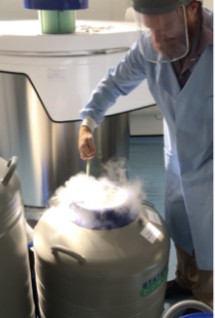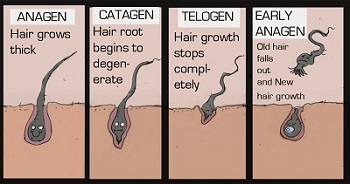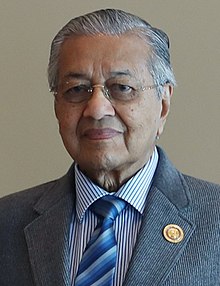I first covered UK-based HairClone in 2016. Later in the same year, HairClone’s very friendly CEO Dr. Paul Kemp kindly answered a number of reader questions.
Although Dr. Kemp has since been in touch with me, I am reluctant to write more frequent posts on HairClone. I do not want to repeat follicle banking related news unless there is a groundbreaking development in actual hair multiplication. Dr. Kemp was formerly the CEO of Intercytex. I hope that he uses his past experiences to prevent another disappointment for us hair loss sufferers.
Update: May 21, 2021
HairClone, Claire Higgins and Hair Research PhD
HairClone and Dr. Claire Higgins are partnering to sponsor one PhD student for a hair research related opportunity at Imperial College London. A stipend of 18,000 British Pounds will be provided and the program begins in the 2021/2022 year. Besides Dr. Higgins, the student will also be mentored by Dr. Sylvain Ladame.
According to the announcement, this “advanced therapeutics” related research will consist of two parts:
- Develop a microneedle device for the delivery of reprogrammed dermal papilla cells to miniaturized alopecic hair follicles.
- Use in-depth computational analysis and in vitro hair follicle modeling. The purpose of this will be to understand the mode of action by which papilla cells rejuvenate hair follicles. And in the process, reverse androgenetic alopecia (aka male pattern baldness).
While it is great to see this initiative, it also means that the actual hair multiplication (or cloning) is still a few years away. In any event, I am glad that HairClone is still focusing on an ultimate goal beyond hair follicle banking.
August 4, 2019
HairClone Begins Follicle Banking
It seems like HairClone has not disbanded or gone silent, but is moving forward full steam. The company is starting its follicle banking service after earlier this week getting UK government approval. In fact the company will be the world’s first ever hair follicle banking system. Press release: follicle banking.
Edit: In May 2021, a South Korean company named Han Bio also supposedly started hair follicle banking services.

The logic behind banking your currently healthy hair follicles is similar to the logic behind banking young sperm, of your young eggs, or even newborn umbilical cord blood banking.
Banking at the earliest opportunity “stops the clock” on young hair follicles from ageing. The dermal papilla cells will then theoretically be more active and “youthful” when the hair multiplication technology is available in future.
Both males and females over age 18 will be able to have around 50 follicle units extracted, cryopreserved and stored for future use (when hair multiplication or cloning type treatments are available). Cryopreservation and storage of hair follicles at -150C essentially “stops the clock” when it comes to further hair loss, thinning or miniaturization.
Dr. Paul Kemp’s Recent E-mail
Dear HLC2020 Admin,
It has been some months since we last chatted, but I just wanted to let you know that we have been working hard. We have now been authorized by the UK’s Human Tissue Authority (HTA) to begin to bank cryopreserved follicles. In order to gain this approval, we had to carry out extensive validation studies to show that we could:
- Reproducibly extract human follicles.
- Cryopreserve them.
- Ship, test and thaw the follicles.
- Extract viable cells that could be culture expanded.
We first submitted the license application in January and then there were a series of questions. Some of these needed additional work, but the end result is an incredibly well understood robust process.
The HTA stress that this does not authorize or approve treatment and gaining that approval is the next stage in our strategy. We are all set to develop the GMP validation data for culture expanded follicle cells and just need to raise the funds to do so. As you know, we tried to do this through crowdfunding, but unfortunately weren’t successful. So we are looking at alternative funding sources. This has given a significant delay to our original timelines.
Banking will be available through our clinical partners and banking associates who will be licensed procurement centers and we plan to increase the number of these partners and associates over the coming months.
Cryopreservation
Cryopreservation and follicle banking is just the first step in the process. Important elements to note are:
- It will be available to both men and women.
- Banking will allow multiple treatments from one initial surgery.
- Banking at the earliest possible stage “stops the clock” on further ageing of the cells.
- Since patients with banked follicles have already undergone the surgery step, they will be first in line for cell expansion when treatments are authorized.
- The follicles remain the property of the patient so could be used in other cell based treatments if the patient chooes so down the road.
The next stage is to work with our clinical partners to develop a system to rebuild miniaturizing follicles. Follicular neogenesis is also an interest of ours. We are carrying out some work on this, but our first goal will be to rescue a patient’s natural hairs. As all patients are unique, we envision that this could also be used in the future in combination with hair transplants.
I have attached a press release that provides more information and please don’t hesitate to contact me if you have questions.
Paul Kemp PhD
Co-Founder, Chief Executive Director
www.HairClone.me
@HairClone
#HairClone


